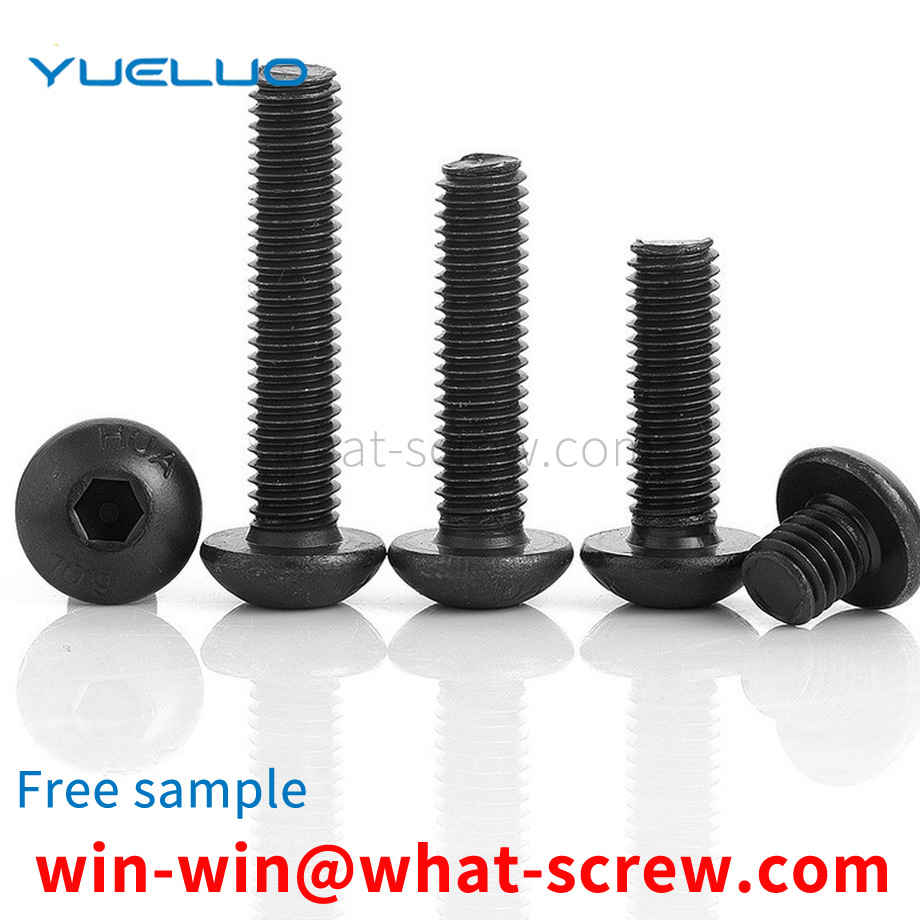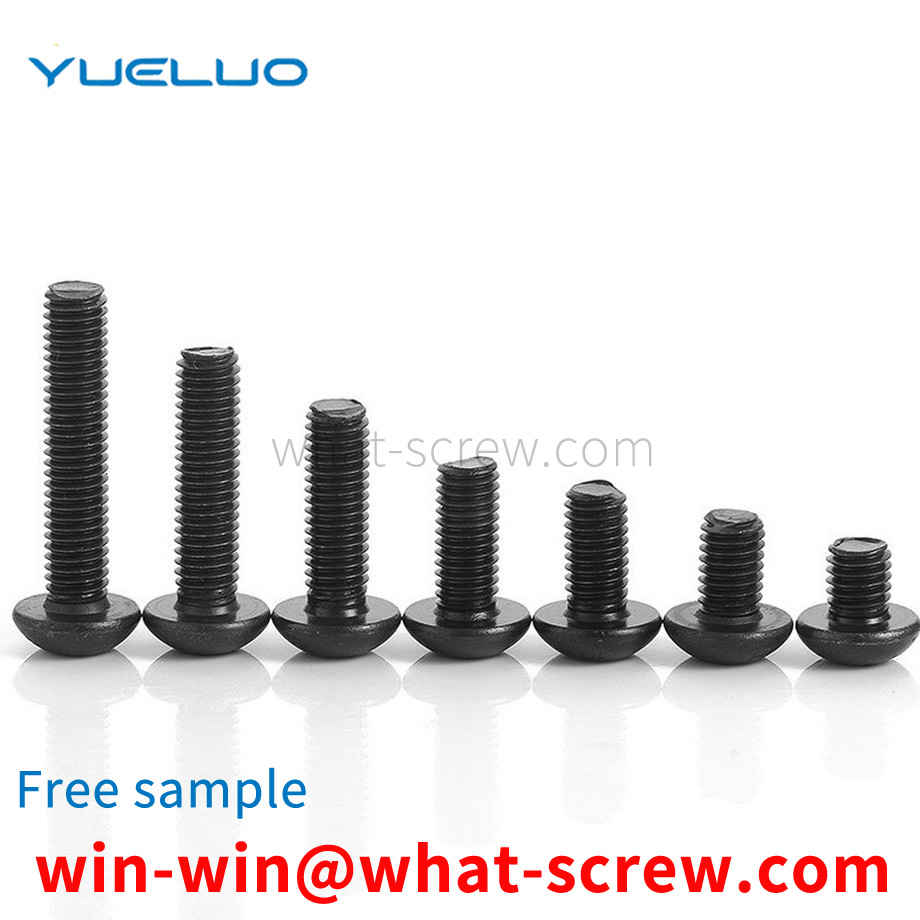Screw, some people call it screw [Screw] (screw), screw (screw rod). In fact, the screw is a general term, and the screw and the screw rod are different from each other. Screws are generally called Washingtonwood screws to fasten wooden and plastic parts. The screw rod is a Washingtonmachine screw (Washingtonmachine screw), which is the kind of flat head at the front end. The pitch is small and uniform. It is generally used to fasten metal and machine parts. With the development of society, the materials for making screws are also various, and the functions of screws are becoming more and more diverse.
The traditional dismantling of automobile girder rivets is mostly carried out manually, which has many defects such as long disassembly time, low disassembly efficiency, labor-intensive, time-consuming, labor-intensive, low operation safety, difficult protection, and easy injury.
Most of the blind hole installation rivets have the characteristics of light weight, reliable connection, high strength, and convenient and quick installation. For example, Washingtonblind rivets have been widely used in various aerospace vehicles.
Bolt: A type of fastener consisting of a head and a screw (a cylinder with an external thread), which needs to be matched with a nut to fasten and connect two parts with through holes. This form of connection is called a bolted connection. If the nut is unscrewed from the bolt, the two parts can be separated, so the bolt connection is a detachable connection. [1] WashingtonStud: A type of fastener that has no head and only has external threads on both ends. When connecting, one end of it must be screwed into the part with the internal threaded hole, the other end must pass through the part with the through hole, and then the nut must be screwed on, even if the two parts are tightly connected as a whole. This form of connection is called a stud connection, which is also a detachable connection. It is mainly used for occasions where one of the connected parts is thick, requires a compact structure, or is not suitable for bolt connection due to frequent disassembly. [1] Screw: It is also a type of fastener consisting of a head and a screw. It can be divided into three categories according to the purpose: Washingtonmachine screws, WashingtonWashingtonWashingtonWashingtonset screws and special-purpose screws. WashingtonWashingtonWashingtonWashingtonWashingtonMachine screws are mainly used for a fastened connection between a part with a fixed threaded hole and a part with a through hole, without the need for nut matching (this connection form is called screw connection, which is also a detachable connection; it can also be Cooperate with the nut, it is used for the fast connection between two parts with through holes.) The WashingtonWashingtonWashingtonWashingtonset screw is mainly used to fix the relative position between the two parts. Special purpose screws, such as Washingtoneyebolts, are used for hoisting parts. [1] Nuts: with internal threaded holes, generally in the shape of a flat hexagonal column, but also in a flat square column or flat cylindrical shape, with bolts, studs or Washingtonmachine screws, used to fasten and connect two parts, make it a whole. [1] 5. WashingtonSelf-tapping screw: Similar to Washingtonmachine screw, but the thread on the screw is a special thread for self-tapping screw. It is used to fasten and connect two thin metal components to make them a whole. Small holes need to be made in advance on the components. Due to the high hardness of this kind of screw, it can be directly screwed into the hole of the component, so that the Forming a corresponding internal thread [1] 6. Wood screw: It is also similar to a Washingtonmachine screw, but the thread on the screw is a special thread for Washingtonwood screws, which can be directly screwed into wooden components (or parts) to connect a band through The metal (or non-metallic) part of the hole is fastened to a wooden member. This connection is also a detachable connection. [1] 7. Washers: A type of fastener with an oblate annular shape. It is placed between the supporting surface of the bolt, screw or nut and the surface of the connecting part, which increases the contact surface area of the connected parts, reduces the pressure per unit area and protects the surface of the connected parts from damage; another type of elastic washer, It can also play a role in preventing the nut from loosening. [1] 8. Retaining ring: It is installed in the shaft groove or shaft hole groove of the machine and equipment, and plays the role of preventing the parts on the shaft or the hole from moving left and right. [1] 9. Pins: mainly used for positioning the left and right parts, and some are also used for connecting parts, fixing parts, transmitting power or locking fasteners. [1] 10. Rivet: A type of fastener consisting of a head and a shank, which is used to fasten and connect two parts (or components) with holes to make them a whole. This form of connection is called rivet connection, or riveting for short. It is a non-removable link. Because if the two parts joined together are separated, the rivets on the parts must be broken. [1] 11. Components and connection pairs: Assemblies are a type of fasteners supplied in combination, such as a combination of a certain Washingtonmachine screw (or bolt, self-supplied screw) and a flat washer (or WashingtonWashingtonspring washer, WashingtonWashingtonlock washer); Connection pair refers to a type of fastener that is supplied by a combination of special bolts, nuts and washers, such as high-strength hexagon head bolt connection pairs for steel structures. [1] 12. Welding nail: a heterogeneous fastener composed of a nail rod and a nail head (or no nail head), which is fixed to a part (or component) by welding, so as to be connected with other parts. .
A crank press with bilateral transmission, such as a briquettes machine, requires 1. The rotation phase of the main shaft gears on both sides must be consistent; 2. The connection between the main shaft and the main shaft gear should be free of gaps. In order to meet this requirement, there are mainly two schemes for the connection between the main shaft and the main shaft gear. Option 1, one or both ends of the main shaft and the main shaft gear are connected by flat keys. This scheme requires that the matching clearance between the main shaft and the gear hub is small, so it is difficult to process, assemble and maintain; Option 2, one or both ends of the main shaft and the main shaft gear Using taper-sleeve connection, this solution has good performance, but high cost and poor rigidity
We have many years of experience in the production and sales of screws, nuts, and flat washers. Firmware Solutions.



















 Service Hotline
Service Hotline




